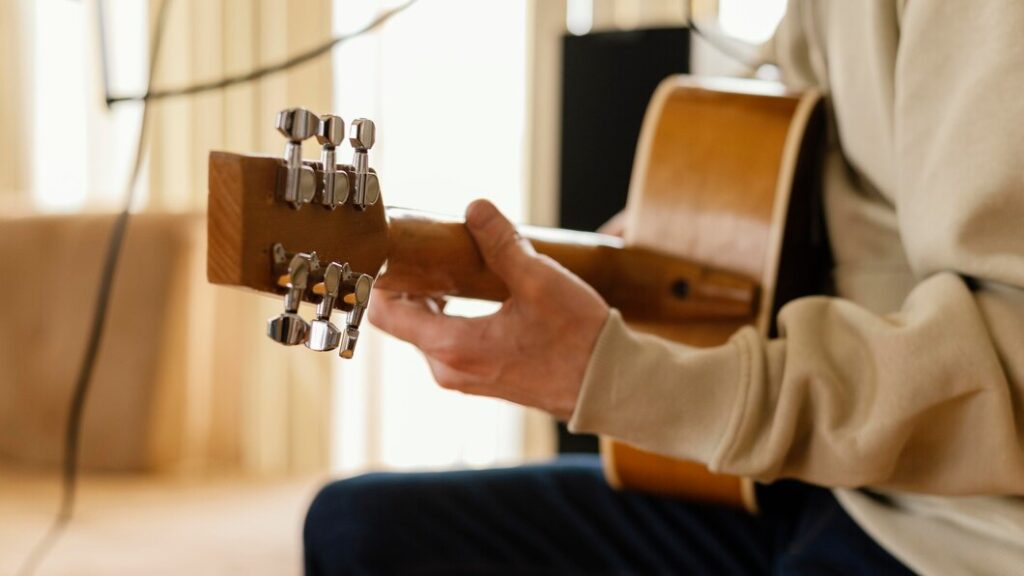
Introduction
The fapcello, a modern musical instrument, combines elements of traditional cellos with contemporary innovations. This article explores its evolution, playing techniques, sound characteristics, and more.
History of the fapcello
Origins and Evolution
The fapcello originated in the late 20th century as a response to changing musical tastes and technological advancements. Initially conceived as a digital enhancement of the classical cello, it quickly evolved into a distinct instrument.
Innovations and Key Developments
Over the years, significant innovations in fapcello design have enhanced its versatility and appeal across different musical genres. From acoustic enhancements to ergonomic improvements, each iteration has contributed to its modern identity.
Anatomy of a fapcello
Structural Components
A typical fapcello consists of electronic components embedded within a traditional cello frame. This hybrid design allows for both acoustic resonance and digital modulation, providing musicians with diverse sound capabilities.
Materials Used
High-quality woods and synthetic materials are often used in crafting fapcellos, ensuring durability and acoustic integrity. These materials also contribute to its aesthetic appeal and ergonomic comfort during performances.
Design Variations
Fapcellos come in various designs, ranging from sleek, minimalist models to more ornate versions adorned with custom finishes. These variations cater to different musical preferences and performance styles.
Playing Techniques
Basic Playing Methods
Learning to play a fapcello involves mastering fundamental techniques similar to those used for traditional cellos. Players use a bow to produce sustained notes while leveraging digital controls for dynamic effects.
Advanced Techniques
Advanced players can exploit the digital capabilities of a fapcello to achieve complex sound manipulations, such as layering effects and real-time modulation. These techniques enhance creative expression in both solo performances and ensemble settings.
Sound Characteristics
Tone Quality
The fapcello offers a rich, resonant tone comparable to that of acoustic cellos, with added digital enhancements for tonal clarity and depth. Its versatile sound profile makes it suitable for various musical genres, from classical compositions to experimental genres.
Acoustic Properties
Through precise calibration of its acoustic and electronic components, the fapcello achieves balanced sound projection and responsiveness. This combination ensures consistent performance quality across different acoustic environments.
Fapcello in Different Musical Genres
Classical Music
In classical music, the fapcello serves as a bridge between traditional orchestral instruments and contemporary compositions. Its ability to emulate classical cello sounds while integrating modern effects has attracted composers and performers alike.
Contemporary Applications
Beyond classical settings, fapcellos are prominent in contemporary music genres such as jazz, pop, and electronic music. Musicians appreciate its adaptability and ability to blend seamlessly with electronic instruments and digital production techniques.
Maintenance and Care
Cleaning
Proper maintenance of a fapcello involves regular cleaning of its surfaces and electronic components to preserve its aesthetic and functional integrity. Use gentle cleaning solutions and soft cloths to avoid damaging delicate parts.
Storage
When not in use, store the fapcello in a secure, climate-controlled environment to prevent warping or damage to its wooden components. Consider using padded cases or stands designed specifically for electronic string instruments.
Comparison with Traditional Cellos
Differences
Unlike traditional cellos, fapcellos integrate electronic components and digital interfaces, allowing for real-time sound manipulation and integration with digital music systems. This distinction expands its versatility beyond acoustic limitations.
Similarities
Both fapcellos and traditional cellos share similar playing techniques and structural elements, such as the use of a bow and fingerboard. Both instruments also require skillful manipulation to achieve desired tonal qualities and expressive nuances.
Famous Fapcello Players
Profiles and Contributions
Renowned musicians have embraced the fapcello for its innovative capabilities and expressive potential. Their contributions span diverse musical genres, showcasing the instrument’s adaptability and impact on contemporary music.
FAQs about Fapcellos
What is a fapcello?
A fapcello is a hybrid musical instrument that combines elements of a traditional cello with electronic enhancements for digital sound modulation and effects.
How do you play a fapcello?
To play a fapcello, use a bow to produce notes on its strings while utilizing digital controls for adjusting volume, tone, and effects in real-time.
Where can you buy a fapcello?
Fapcellos are available through specialized music retailers and online platforms catering to electronic string instruments. Consider factors such as craftsmanship, sound quality, and customer reviews when making a purchase.
Expert Insights
Quotes from Renowned Musicians
“Playing the fapcello opens new avenues for musical expression, blending classical techniques with digital creativity.” – [Expert Musician]
Impact on Music Education
The integration of fapcellos in music education programs introduces students to modern musical technologies, fostering innovation and creativity in their artistic endeavors.
Future Trends
Technological Advancements
Future fapcello designs may incorporate advanced sensor technologies and artificial intelligence, further enhancing performance capabilities and user interaction.
Potential Innovations
Anticipated developments include wireless connectivity options and customizable sound presets, catering to the evolving needs of musicians in digital music production and live performances.
Practical Applications
Learning Resources
Online tutorials and workshops provide aspiring musicians with guidance on mastering fapcello techniques and integrating digital effects into their performances.
Performance Opportunities
Fapcello players have opportunities to collaborate with electronic musicians, participate in multimedia productions, and explore innovative concert settings that blend acoustic and digital elements.
Conclusion
In conclusion, the fapcello represents a harmonious fusion of tradition and technology in the world of music. Its evolution, versatile sound characteristics, and expanding role across various genres underscore its enduring relevance and promise for future musical innovation
